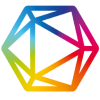Programa de Bolsa Atleta em uma universidade federal brasileira: critérios de elegibilidade e perfis de atletas
Resumo
A bolsa atleta é apoio financeiro relevante para atletas, com iniciativas específicas em universidades, como as federais. Entretanto, pouco se conhece acerca dos requisitos e dos perfis demandados por estes programas. Este estudo teve como objetivo identificar os critérios de elegibilidade e os perfis de atletas demandados pelo Programa Bolsa Atleta da Universidade Federal de Mato Grosso do Sul. Trata-se de uma pesquisa documental, longitudinal retrospectiva, exploratória e qualitativa, com análise temática dos editais publicados entre 2013-2024. Os critérios de elegibilidade foram agrupados em quatro dimensões: disciplinar, burocrática, de marketing e esportiva. Observou-se baixa sistematização entre 2013 e 2016, limitado-se às dimensões disciplinar e burocrática. Entre 2017 e 2020, além dos critérios anteriores, passaram a vigorar exigências como auxílio na organização de eventos institucionais, carga horária semanal de atividades, disponibilidade para viagem e atuação no marketing. De 2021 a 2024, os critérios do segundo período foram mantidos. Os perfis demandados foram compostos por dimensões demográfica, acadêmica e esportiva. O perfil demográfico foi introduzido em 2023, com delimitação entre 16 e 25 anos. O perfil acadêmico, até 2022, restringia-se a estudantes de graduação, passando a incluir mestrandos e doutorandos a partir de 2023, além da exigência de bom desempenho acadêmico desde 2022. O perfil esportivo esteve voltado ao esporte recreacional (2013-2016), ao estudante-atleta (2017-2020) e ao atleta-estudante (2021-2024). Conclui-se que o PBA-UFMS passou por reformulações significativas, demandando atualmente atletas-estudantes com foco na representação institucional em competições da Confederação Brasileira de Esporte Universtário.
Downloads
Copyright (c) 2025 Junior Vagner Pereira da Silva

This work is licensed under a Creative Commons Attribution 4.0 International License.
•Os autores detém os direitos autorais, permitindo citações de seu conteúdo em outros veículos de informações científicas e técnicas.

Este obra está licenciado com uma Licença Creative Commons Atribuição 4.0 Internacional.












_1502.jpg)











